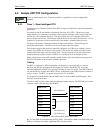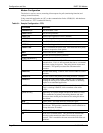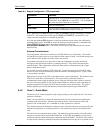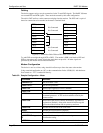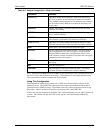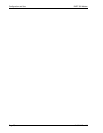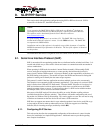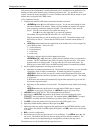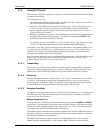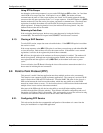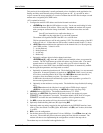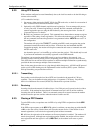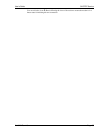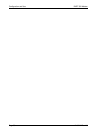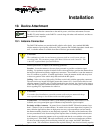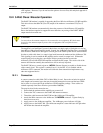
User’s Guide SLIP/PPP Service
2110212 Rev 1.0 Page 81
9.1.2. Using SLIP Service
With a modem configured as noted above (Section 9.1.1), the local host needs to do the following
to connect to the network.
(AT is omitted for brevity):
1. On start-up, either monitor the DART 300 for the OK result code, or check for an assertion of
the CTS control line to indicate the modem is ready.
2. Optionally verify CDPD channel acquisition and registration. You can manage this process
as suits your need. If manual registration is selected, the Dial command can handle the
network registration process using the NEI indexed by the auto-register index. See the AT
Command Reference for details.
3. D (Dial); any parameters are ignored. This command forces the modem to attempt to register
regardless of the setting of auto-registration. The modem will reply with CONNECT and
assert DCD to indicate the transition to data state.
An alternative process is to issue O to go on-line (start the session). This method should only
be used if you know the modem has successfully registered on the CDPD network.
The modem is now ready to pass local host packets to the network. Any incoming packets, from
any calling client or responding server, will be passed to the local host. This allows the host to
send and receive packets to and from multiple destinations asynchronously provided the host
application can manage multiple socket connections.
Once in data state, the modem acts as a pipe through which data passes. All PAD and IP protocol
stacks as well as SLIP framing must be implemented within the local host (DTE) system.
Windows Dial-up Networking can provide these services.
9.1.2.1. Transmitting
Data packets received from the host (DTE) are forwarded to the network in 128 byte segments.
They can be buffered on the modem up to 14 segments (1792 bytes). Beyond this, there is local
hardware flow control (RTS/CTS) with the host to prevent overflow (Section 4.4.2 above).
9.1.2.2. Receiving
Incoming data from the network is buffered (up to 14 x 128 bytes) and is passed to the local host
as it arrives. If the modem has been placed in command state but is still in on-line condition,
incoming data will be buffered. There is an automatic remote flow control between the modem
and the CDPD network to prevent data loss when the modem’s buffers are full.
9.1.2.3. Escaping Data State
Two methods of escaping from data state are available: the Escape Sequence (+++) and the use of
the DTR control line. When the modem transitions from data state to command state, the OK
result code is sent to the local host.
Escape Sequence (+++)
To escape data state in SLIP mode, the host can issue the escape sequence <0xC0>+++<0xC0>
to the modem. The hexadecimal value 0xC0 is the SLIP frame character. This means the modem
will be sent a frame containing nothing but the escape code (+++). This is parsed by the modem
as an escape and it will not forward the packet to the network.
The modem will enter command state but remain registered and in on-line condition (the session is
kept open). If data arrives at the modem while the session is open and the modem is in command
state, the data is buffered as described above.
Entering the 0xC0 character from the keyboard is accomplished one of two ways: using the
numeric keypad to enter Alt+0192, or using Character Map, a Windows accessory program.



